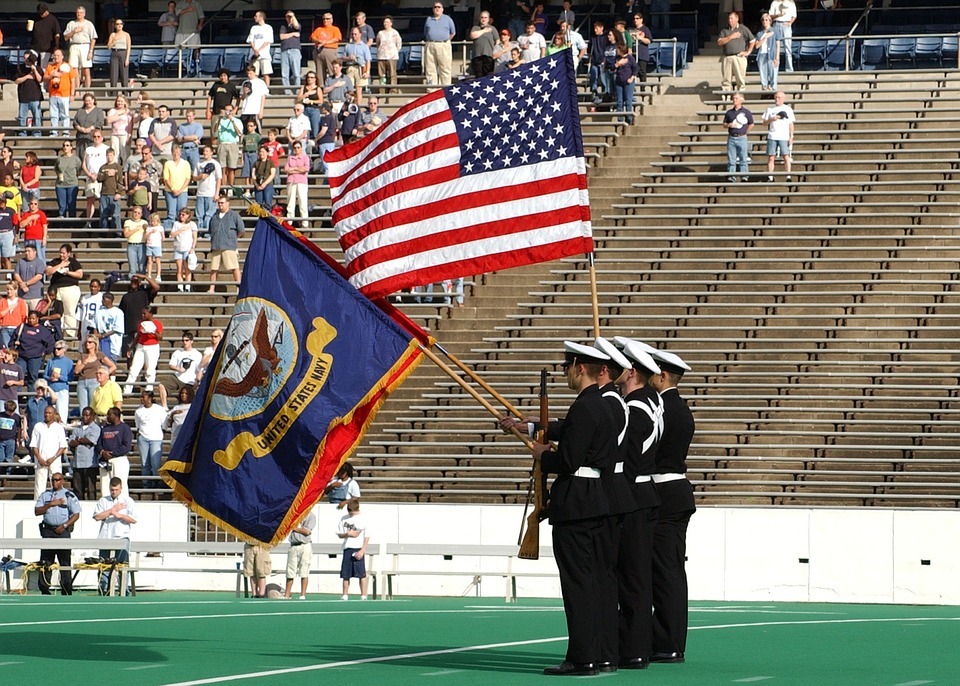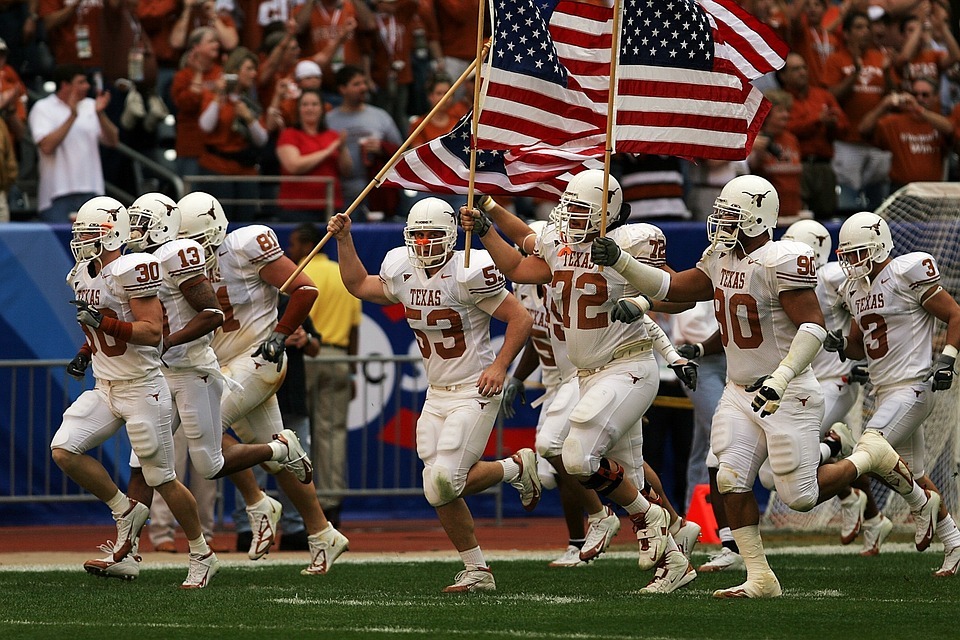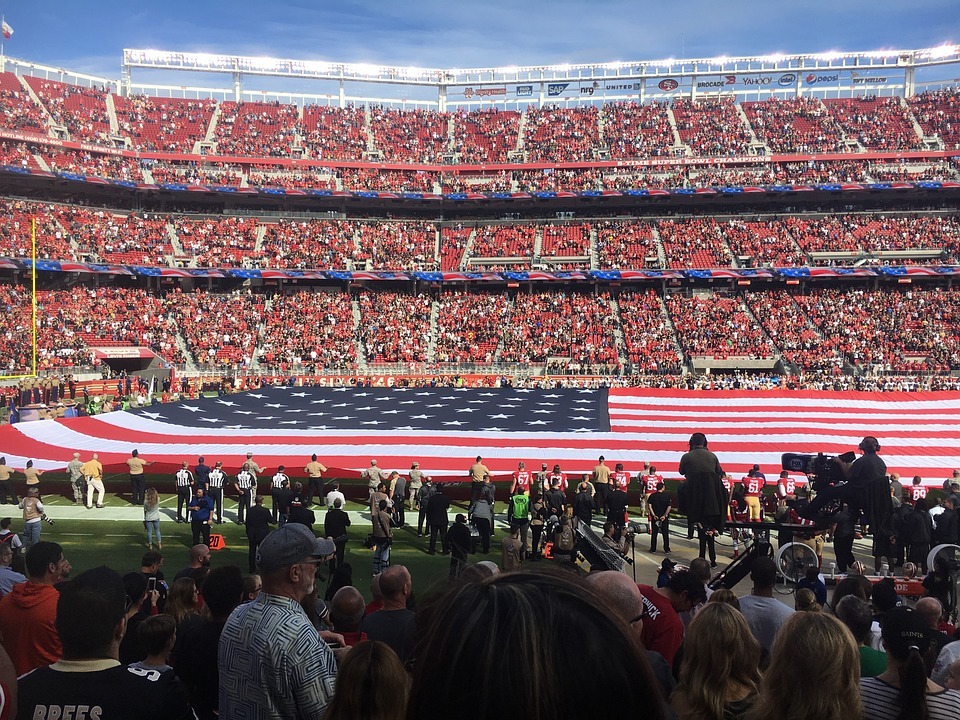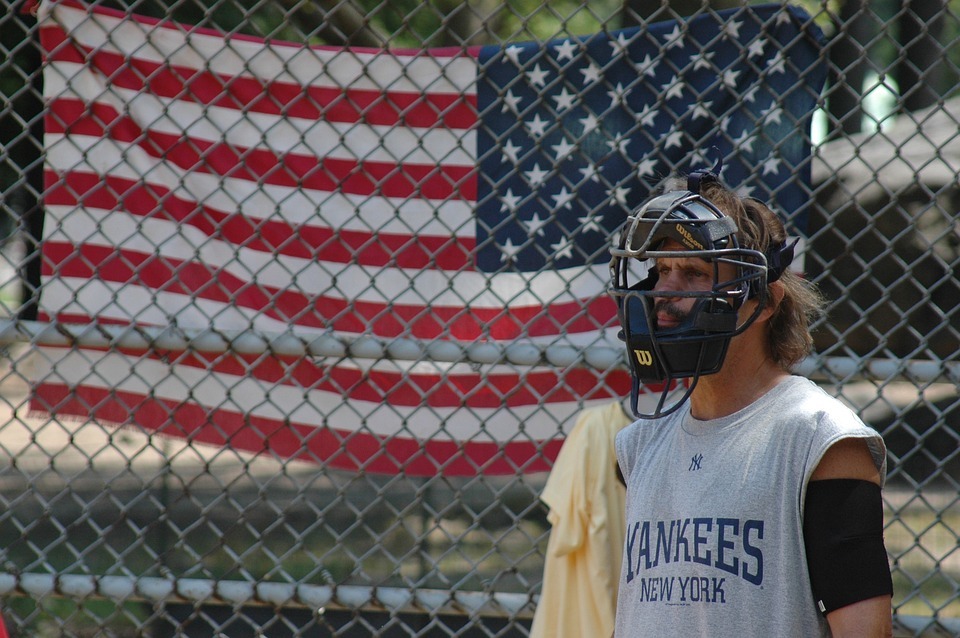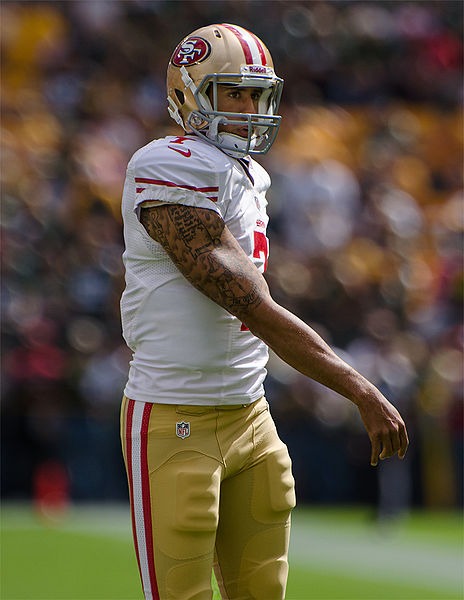For many sports fans in the United States, standing for the National Anthem before a sports game is a time-honored tradition that adds to the thrill and anticipation before the game. But why is the National Anthem played before sporting events in the United States? The answer is anchored in a rich history that shows the country’s profound affection for its national emblems and the values they symbolize. In this article, we’ll look at the roots of this practice, the debates that have erupted over it, and what it means for Americans today.
The Star-Spangled Banner
“The Star-Spangled Banner” is more than just a song; it is the United States national anthem, signifying the country’s patriotism, strength, and resilience. The song’s history can be traced back to the War of 1812 when a young lawyer and amateur poet named Francis Scott Key observed the British navy’s bombardment of Fort McHenry during the Battle of Baltimore. After seeing the American flag still flying high over the fort after a night of hard battle, Key wrote “Defence of Fort M’Henry,” which later became the lyrics to the national anthem.
The tune for “The Star-Spangled Banner” was inspired by a popular British hymn called “To Anacreon in Heaven,” which an American men’s social club adopted. It was then altered to fit Key’s words, and the resulting song immediately became a patriotic American favorite. However, with a range of 19 semitones, it is regarded as one of the most complex and challenging national anthems to perform.
While “The Star-Spangled Banner” had become a popular patriotic song in the United States, it wasn’t until 1889 that the United States Navy officially recognized it for use on all occasions where a band was present. The song was then declared the official national anthem of the United States by the United States Congress in 1931. The resolution was passed into law by President Herbert Hoover, and it is currently codified at 36 U.S.C. § 301(a)
Brief History of How the Star-Spangled Banner Was Written
During the War of 1812, a physician named Dr. William Beanes was apprehended by the British for assisting in the arrest of several British soldiers who were pillaging residences. Dr. Beanes’ friend Francis Scott Key flew to Baltimore to try to gain his release. Key rented a boat and went down the Chesapeake Bay, eventually arriving at the HMS Tonnant, where Dr. Beanes was imprisoned. Beanes was freed after Key and Skinner showed Major General Robert Ross and Vice Admiral Alexander Cochrane letters written by wounded British prisoners thanking the American doctors for their care. The release was granted, but Key and Skinner were held captive until the British Navy sailed into Fort McHenry after the battle.
In the Battle of Fort McHenry, Key witnessed the bombardment and noticed that the fort’s smaller “storm flag” flew all day and night but was replaced in the morning by the large garrison flag. The United States triumphed, and the sight of the flag flying above the fort prompted Key to pen a poem that became known as “The Star-Spangled Banner.” Mary Young Pickersgill and her workmen on Baltimore’s Pratt Street created the flag with fifteen stars and fifteen stripes. This banner was later dubbed the Star-Spangled Banner, and it is now on display in the National Museum of American History.
Key penned his poetry on the back of a letter he’d carried in his pocket while still on the ship. He finished the poem while staying in a Baltimore hotel and afterward put it to the tune of a popular British song. The poem immediately gained popularity and was eventually accepted as the United States national anthem. Key remained a famous attorney in Maryland until his death in 1843. “The Star-Spangled Banner” is still a significant emblem of American patriotism and resilience today.
How the Star-Spangled Banner Became the USA’s National Anthem
The song’s popularity expanded during the nineteenth century, and bands frequently sang it at public gatherings such as Independence Day festivities. In 1892, on the parade ground at Fort Meade, South Dakota, the notion of making “The Star-Spangled Banner” the national anthem was born. Colonel Caleb Carlton began the custom of playing the song “at a retreat and at the close of parades and concerts.” President Woodrow Wilson ordered the song to be performed at military and other relevant occasions in 1916.
Six unsuccessful measures were submitted between 1918 and 1929 to officially establish “The Star-Spangled Banner” as the national anthem. The National Federation of Music Clubs sponsored a composition contest to designate a national anthem in 1927, and they chose the text of “America the Beautiful.” However, no winner was chosen. In 1930, the Veterans of Foreign Wars petitioned the United States House Committee on the Judiciary to officially recognize “The Star-Spangled Banner” as the national anthem, and the petition was brought to the House Committee on the Judiciary on January 31, 1930. Later that year, the House of Representatives enacted the bill, and the Senate passed it on March 3, 1931. On March 4, 1931, President Herbert Hoover signed the measure, officially establishing the song as the country’s national anthem.
Before 1931, various songs were considered the official hymns of the United States. During most of the 19th century, “Hail, Columbia” was used at official gatherings, while “My Country, ‘Tis of Thee” was often considered a de facto national anthem, even though its melody was identical to the UK’s national hymn, “God Save the King.” With the conclusion of the War of 1812 and subsequent American wars, other songs were introduced to compete for popularity at public events, including “America the Beautiful,” which was once considered a potential national anthem before 1931.
Key’s 1814 published version of the poem begins, “And this be our motto-“In God is our trust!” when “In God We Trust” was being considered for adoption as the country’s national motto by the US Congress in 1956, the words of the fourth verse of “The Star-Spangled Banner” were used to support the motto’s adoption.
Why the National Anthem is Played Before Sports Matches
Because of its historical significance and connection with patriotism, the Star-Spangled Banner has become a mainstay in sporting events. The song was first heard during patriotic festivities and parades in the 1800s, but it received greater notoriety after General Order #374 declared it the official anthem played anytime the United States flag was flown.
As the United States triumphed in World War I, patriotism grew even stronger, and sporting events became a popular venue for promoting national loyalty and allegiance. By this time, the Star-Spangled Banner was well-established, and it was a natural choice to play before games to show support for the country.
Over time, the custom of performing the national anthem prior to sporting events became more entrenched, and it is now a permanent feature at nearly all levels of athletic competition. The pre-game performance of the national anthem is now regarded as a representation of nationalism and admiration for the nation, and it is a significant part of many Americans’ sports involvement.
While some have argued that playing the national anthem at sporting events is unnecessary or even divisive, it remains a powerful symbol of national unity and pride for many Americans. Whether you agree with the custom or not, there is no disputing that sports and patriotism are inextricably linked in the United States, and the Star-Spangled Banner will almost certainly continue to be played before games for many years to come.
Controversies and Protests
The NFL player kneeling during the national anthem controversy began in 2016 when Colin Kaepernick began kneeling during the anthem before games. Kaepernick was demonstrating against police brutality and racial inequity in America, and his actions prompted a national debate about patriotism, protest, and free expression.
Many Americans saw Kaepernick’s protest as disrespectful to the flag and the men and women who had fought and died in defense of the country. Others saw it as a brave act of peaceful resistance to injustice.
President Trump, a staunch opponent of the protests, has said that players who kneel dishonor the flag and the troops. He has urged the NFL to discipline kneeling players and has pushed fans to boycott games.
Critics argue that the president is using the protests to divert attention away from more pressing issues, such as Puerto Rico’s recovery from Hurricane Maria. They also say his condemnation of the demonstrators is part of a long history of racially divisive words and actions.
The debate has also highlighted America’s complicated relationship between sports and politics. While many Americans view sports as a way to get away from politics and the world’s problems, sports have always been intertwined with larger social and political issues.
From Jackie Robinson breaking down the color barrier in baseball to Muhammad Ali refusing to fight in Vietnam, athletes have frequently utilized their platforms to raise awareness about social concerns and advocate for change.
All in all, the tradition of playing the national anthem before sporting events is strongly founded in the country’s history and the need to organize public support during warfare. However, in modern times, its continued practice has become more about commercialization and a display of patriotism for the sake of marketing. Nonetheless, the recent controversy over NFL players kneeling during the anthem demonstrates that the tradition still has deep emotional and political undertones for many Americans. Whatever one’s point of view, it is clear that the national anthem’s role in American sports is more complicated than meets the eye and remains a source of debate and discussion. The tradition of playing the national anthem before sports matches speaks to the cultural significance of such events, which extends beyond the arena. How Does Hosting a Major Sporting Event Change a City? delves into the transformative impact these events have on their host cities, exploring how the spirit of national pride and unity during the games can lead to lasting changes in infrastructure, community cohesion, and international prestige.

